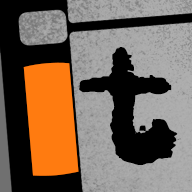Hello,
I am interested in learning to become an electric. May I get advice on what is the most basic information that may be expected from me to know stepping into the role of a 3rd electric on set?
Interestingly enough, I have always stayed away from electrical power as that was something that always scared me but now I wish to go into learning about this field.
I have just recently ordered the Set Lighting Technician book ( waiting in the mail) but in the meantime, can someone suggest me some kind of "breakdown" of some of the major parts that I can get start researching/reading on upon?
Such as: 3-phase power, Generator distribution...
Advice will be highly appreciated.
Thank you
I am interested in learning to become an electric. May I get advice on what is the most basic information that may be expected from me to know stepping into the role of a 3rd electric on set?
Interestingly enough, I have always stayed away from electrical power as that was something that always scared me but now I wish to go into learning about this field.
I have just recently ordered the Set Lighting Technician book ( waiting in the mail) but in the meantime, can someone suggest me some kind of "breakdown" of some of the major parts that I can get start researching/reading on upon?
Such as: 3-phase power, Generator distribution...
Advice will be highly appreciated.
Thank you


